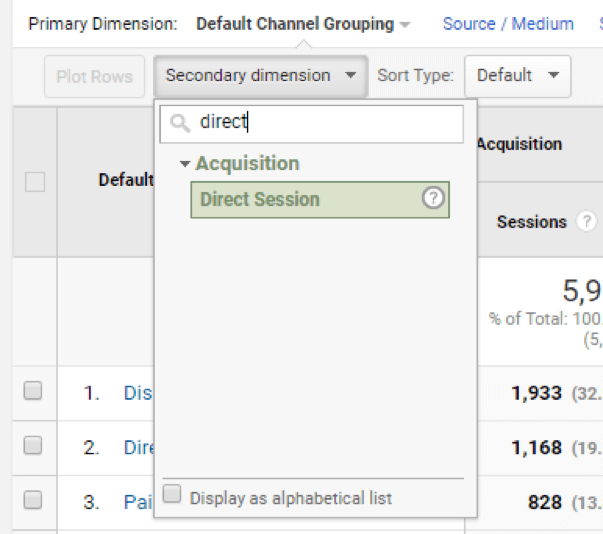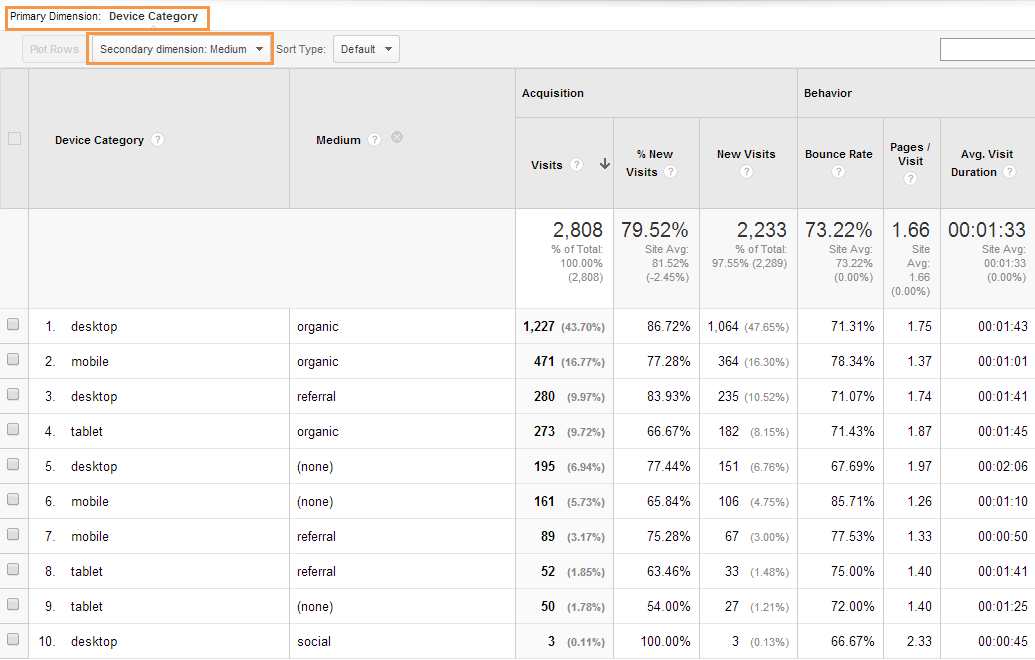Maximizing SEO with Secondary Dimension in Google Analytics
Maximizing SEO with Secondary Dimension in Google Analytics
Blog Article
Transform Your Analytics Approach With Additional Dimension in Google Analytics
By incorporating additional measurements into information analysis, a brand-new layer of insights arises, dropping light on elaborate customer habits and communications. The tactical application of second measurements holds the vital to opening a treasure trove of important information that can change just how services analyze and act upon their information.
Understanding Second Dimensions in Google Analytics
Second measurements in Google Analytics provide extra context to key data by permitting users to analyze metrics across a second measurement, using much deeper understandings into user behavior and interactions on an internet site. Secondary Dimension in Google Analytics. While main dimensions supply fundamental information points such as pageviews, bounce rate, and session duration, additional measurements provide a more thorough view by segmenting the primary data even more. This segmentation allows users to assess metrics in combination with another measurement, such as website traffic resources, demographics, or user behavior
Benefits of Using Secondary Measurements
Making use of second measurements in Google Analytics provides a critical advantage by boosting the depth of analysis and supplying an extra extensive understanding of customer interactions and habits on a site. By incorporating additional dimensions, analysts can get important understandings into the efficiency of certain sections or variables within their data. This allows an extra comprehensive assessment of individual habits beyond surface-level metrics, permitting a deeper exploration of the aspects influencing customer engagement and conversions.

Exactly How to Carry Out Additional Dimensions
When incorporating secondary dimensions in Google Analytics, one important action is to select the pertinent metrics and measurements to improve the analysis procedure. To apply secondary measurements efficiently, begin by accessing your Google Analytics account and navigating to the record you want to enhance with additional data. When in the report, situate the "Additional Dimension" button, generally located above the information table. Clicking on this switch will certainly open up a drop-down food selection listing different measurements that can be included to your primary dimension for deeper understandings.
After selecting the suitable secondary dimension, such as 'Source/Medium' or 'Gadget Group,' Google Analytics will display the information in an extra in-depth layout, enabling you to cross-analyze various facets of individual behavior. Remember to site web try out various combinations of second and key measurements to reveal important patterns and trends that can educate your advertising and marketing approaches. By applying secondary measurements attentively, you can get an extra detailed understanding of your site or app performance and make data-driven decisions to enhance your digital presence.
Studying Data With Secondary Measurements
Boost your information analysis in Google Analytics by incorporating secondary measurements to delve deeper into customer behavior patterns and optimize your electronic marketing techniques properly - Secondary Dimension in Google Analytics. By adding second measurements to your main information, you can acquire useful insights that can help you make notified decisions about your site or application efficiency
Analyzing information with second dimensions enables you to segment your main information further, supplying a much more extensive sight of individual communications. For example, integrating the primary dimension of 'source/medium' with a secondary measurement like 'touchdown web page' can expose which details pages are driving web traffic from various sources. This info can be critical in fine-tuning your web content technique or maximizing your advertising projects to increase conversions.
Furthermore, making use of secondary measurements allows you to identify relationships in between different metrics, assisting you comprehend the effect of different elements on individual behavior. Whether it's assessing demographics alongside individual interaction metrics or device categories with conversion rates, second measurements encourage you to uncover covert patterns and patterns that can direct your advertising initiatives.
Enhancing Performance With Additional Dimensions
To boost the efficiency of data evaluation and decision-making in Google Analytics, including secondary measurements is key to optimizing efficiency metrics and acquiring deeper insights into Learn More individual habits patterns. By utilizing secondary dimensions, experts can delve beyond surface-level information and uncover beneficial correlations that may otherwise go undetected. This optimization technique allows companies to tailor their marketing efforts better, determine areas for improvement in internet site usability, and improve overall customer experience.
Secondary dimensions provide a more detailed sight of user communications by giving extra context to primary information metrics. For example, pairing the key measurement of 'landing page' with an additional measurement like 'device classification' can expose whether certain gadgets are more probable to drive engagement on details touchdown pages. This understanding can educate receptive design renovations or targeted advertising techniques to boost performance.

Final Thought
Finally, the assimilation of additional measurements in Google Analytics gives organizations with a powerful device Click This Link to boost their analytics method. Secondary Dimension in Google Analytics. By delving deeper into individual actions and interactions, marketers can uncover useful understandings that can drive efficiency optimization and improve the general user experience. Leveraging secondary dimensions permits an extra thorough evaluation of data, resulting in even more educated decision-making and customized advertising initiatives
Additional measurements in Google Analytics give extra context to key information by allowing users to analyze metrics across a 2nd dimension, using much deeper insights into user habits and interactions on a web site. While key measurements offer basic data factors such as pageviews, bounce price, and session duration, secondary dimensions provide a more thorough sight by segmenting the main data better.One of the essential benefits of utilizing second dimensions is the ability to discover relationships and patterns that may not be promptly noticeable when examining data with primary dimensions alone.When integrating additional measurements in Google Analytics, one necessary action is to pick the relevant metrics and dimensions to improve the analysis procedure. Combining the main measurement of 'touchdown web page' with an additional measurement like 'device group' can reveal whether particular tools are much more most likely to drive interaction on specific landing web pages.
Report this page